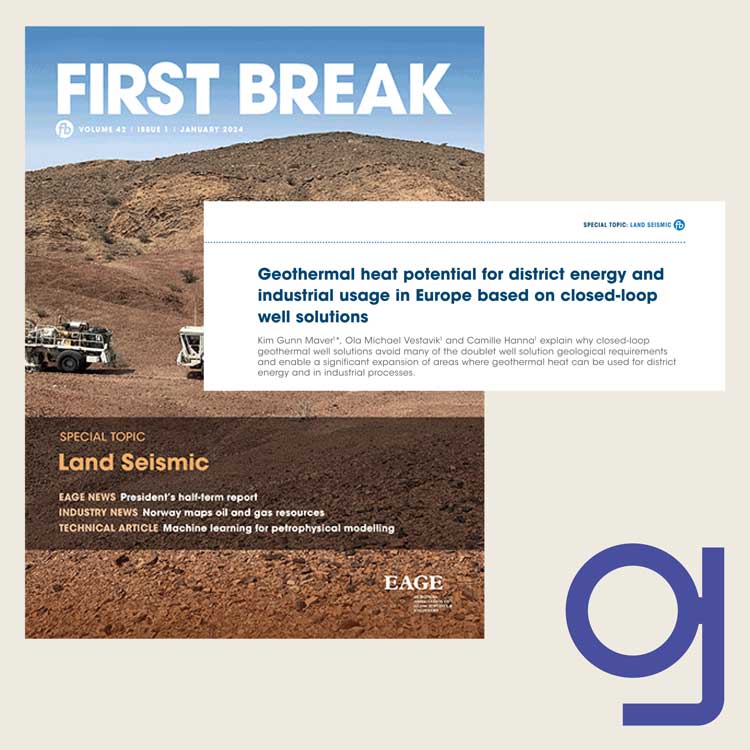By Kim Gunn Maver, Ola Michael Vestavik, and Camille Hanna in First Break, Vol 42, Issue 1, Land Seismic.
Introduction: The deep geothermal heat potential for district heating and to a lesser extent district cooling and industrial usage in Europe has been reviewed in many articles and reports. A common premise in these publications is that the heat extraction is based on a conventional doublet geothermal well solution, requiring a geothermal reservoir with certain parameters. The doublet well solution uses one well to produce formation water and another well to inject cooled formation water some distance apart, typically at a vertical depth of 2-4 km. The solution is dependent on the geothermal reservoir’s thickness and parameters such as porosity, permeability, and geochemistry to ensure hydrologic connectivity between the wells to maintain heated water production. These geological reservoir requirements limit the usage of the solution for geothermal heat production. New geothermal closed-loop well solutions have been introduced to mitigate the issues with the doublet solution. Stellae Energy has developed a single well closed-loop system for repurposed abandoned oil and gas wells with the fluid circulated down the well annulus, getting heated from the surrounding rock through conduction and convection, and then produced back to the surface through the production tubing (Stellae Energy, 2023). Eavor announced in 2022 the start of a closed-loop geothermal system in Geretsried, Germany. The system is similar to how an underground heat exchanger works. Initially two wells are drilled vertically and are then directed horizontally with several parallel branches being created. The boreholes from the two wells are connected at depth with a connection point the size of an A4 sheet of paper. This makes it possible to independently circulate a fluid in the rock and no geothermal water is required (Eavor, 2022).
Green Therma has recently introduced a new geothermal horizontal closed loop well solution that is based on a single well or a group of single wells depending on the energy requirement (Maver et al., 2023). Each well is completed with a patent pending dual vacuum pipe technology. The fluid is heated when flowing along the geological formation in the horizontal section of the well and returned back to the surface with minimal heat loss inside the inner dual vacuum pipe, which works similarly to a thermo flask.
Closed-loop geothermal well solutions avoid many of the doublet well solution geological requirements and enable a significant expansion of the areas where geothermal heat can be used for district energy and in industrial processes. In addition, the closed loop geothermal well solution mitigate a number of operational issues with the doublet solution like the produced water can cause corrosion, scaling, clogging, include toxic waste and result in significant maintenance issues of surface installations, in the injection well and in the reservoir around the injection wellbore.
Furthermore, unlike closed-loop solutions, hydraulic fracking may be required to improve injectivity and formation connectivity with the risk of compromising groundwater aquifers, having a detrimental impact on the reservoir formation and potentially inducing seismicity with associated unwanted surface effects.
If you want to read the rest of the article, please contact info@greentherma.com.

